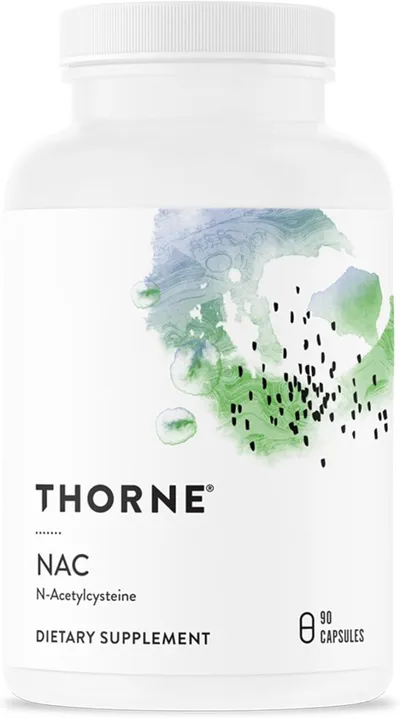Unlocking the Sun: How Much Exposure Do You Really Need for Optimal Vitamin D
Vitamin D plays a vital role in maintaining overall health; however, many individuals are not fully aware of how it is produced or the effect of sun exposure on its levels in the body.
This blog post examines the fundamentals of Vitamin D- what it is, its significance, and how the body generates it through sunlight.
It also addresses the balance between obtaining sufficient sun for adequate Vitamin D production and the potential risks associated with both excessive and insufficient sun exposure.
Learn how to achieve optimal Vitamin D levels safely through recommended daily intake and health guidelines.
- ORGANIC, PLANT-BASED VITAMIN D3: Plant-D3 is Organic Vitamin D3 derived from sun-grown algae delivered in the optimal Cholecalciferol form.
- ENHANCED WITH PREBIOTIC SUPERFOOD COMPLEX:: Plant-D3 is optimized with a superfood complex that includes digestion enhancing prebiotics.
- 5000 IU PER SERVING: Get a max strength dose of vitamin D. .
- Vegan D3, USDA Organic Certified, 3rd Party Tested: Plant-D3 is organically certified by the USDA and exceeds all vegan standards. It is GMO-free, soy-free, gluten-free, preservative-free, additive-free. It is produced in a cGMP & organic certified facility in the USA and is 3rd party tested for over 100+ toxins or microbial.
Last update on 2025-12-19 / Affiliate links / Images from Amazon Product Advertising API
What is Vitamin D?
Vitamin D is a fat-soluble vitamin that plays a crucial role in maintaining overall health by supporting various physiological functions, including immune system regulation, enhancing mood, and promoting bone health.
This essential nutrient can be obtained from various dietary sources, such as cod liver oil, fatty fish, and egg yolks.
Fortified foods are also significant contributors to vitamin D intake, emphasizing the importance of dietary supplements and nutritional guidelines.
Moreover, it exists in two forms: vitamin D2, found in certain plant foods, and vitamin D3, primarily derived from animal sources and synthesized in the skin upon exposure to sunlight, highlighting the process of photoconversion and the role of UV rays.
Why is Vitamin D Important?
Vitamin D is crucial for multiple bodily functions, primarily promoting bone health by facilitating the absorption of calcium and phosphorus, which are vital for maintaining strong bones and preventing conditions such as osteoporosis and rickets.
Additionally, adequate levels of Vitamin D support the immune system, reducing the risk of chronic diseases and enhancing overall wellness.
Deficiency symptoms can include fatigue and mood disturbances, highlighting the importance of maintaining adequate Vitamin D levels for optimal health, which is crucial for cognitive function and immune system support.
How is Vitamin D Produced?
Vitamin D is primarily produced in the skin through a process known as vitamin D synthesis, which occurs when UVB rays from sunlight penetrate the skin, leading to the conversion of cholesterol into Vitamin D3.
The efficiency of this process is influenced by several factors, including skin type, melanin content, geography, and the time of year, as sunlight exposure varies with seasons and latitude.
Understanding these factors can help individuals optimize their Vitamin D production through safe sun exposure, considering geographic location and time of day.
What is Sun Exposure?
Sun exposure refers to the contact with sunlight, specifically the solar UV radiation that can benefit health through its role in Vitamin D synthesis and provide a natural source of energy.
However, understanding the implications of sun exposure is essential, as it varies based on factors such as the ultraviolet index, time of day, and season.
Following health guidelines regarding safe sun exposure can help minimize risks while maximizing the benefits of sunlight on health, promoting an outdoor lifestyle, and sun safety.
How Much Sun Exposure is Needed for Vitamin D Production?
The amount of sun exposure needed for adequate Vitamin D production can vary widely depending on several factors, including the time of day, the season, and an individual’s geographical location, as well as their skin type, melanin levels, and UV rays absorption.
Generally, health professionals recommend a few minutes of unprotected sun exposure on the skin during peak sunlight hours, ideally between 10 a.m. and 3 p.m., to optimize vitamin D synthesis.
Still, this duration may need to be adjusted based on individual needs and risk factors.
Factors that Affect Sun Exposure and Vitamin D Production
Several factors can significantly affect both sun exposure and Vitamin D production in individuals, including skin type, which dictates how much UV radiation is absorbed, and melanin concentration, which can provide some protection against UVB rays.
Geographical factors, such as latitude and local weather conditions, play a crucial role, as regions further from the equator may receive less UV radiation, especially during winter months.
Individuals with lighter skin tones generally synthesize Vitamin D more efficiently because their skin absorbs UV rays more readily, which is linked to vitamin D receptors and increased bioavailability.
On the other hand, those with higher melanin levels may need more sun exposure to produce the same amount of Vitamin D.
This disparity is vital to consider, particularly in multicultural societies where diverse skin types coexist.
Lifestyle elements such as indoor occupations, the use of sunscreen, and clothing choices can limit sun exposure, further impacting Vitamin D levels.
For populations in northern latitudes or with limited sun access, fortified foods and supplements can serve as effective alternatives to ensure adequate Vitamin D intake, mitigating the effects of seasonal changes and indoor lifestyle.
- IMMUNE SYSTEM SUPPORT: Support your immune system with 2,000 IU (500% DV) of vegan vitamin d3 and 10 organic mushrooms
- CALCIUM ABSORPTION: Use our organic vitamin d3 supplement to boost calcium absorption for bone health. Health Concern: Heart Health Immunity Support Bone Strength
- VITAMIN CHEW: It’s a delicious chewable offered in an organic raspberry lemon flavor with no added sugars or stevia
- VEGAN VITAMIN D3: Our Vitamin D3 chewable contains Organic and Vegan vitamin D from lichen
- Supplement your diet with whole food vitamin d3 that’s certified usda organic and non-gmo verified.
Last update on 2025-12-19 / Affiliate links / Images from Amazon Product Advertising API
What are the Risks of Too Much Sun Exposure?
While sun exposure is essential for Vitamin D production, excessive exposure can lead to significant health risks, including sunburn, skin damage, and an increased risk of skin cancer, making it crucial to find a balance.
Dermatologists emphasize the importance of practicing safe sun exposure habits, such as wearing sunscreen and protective clothing, to mitigate these risks while still reaping the benefits of sunlight on overall health, especially for skin cancer prevention and liver function support.
1. Sunburn
Sunburn is a common condition resulting from overexposure to ultraviolet radiation, characterized by red, painful skin and potential long-term damage if repeated exposure occurs, affecting personal health and outdoor activity choices.
The primary cause of sunburn is the intense ultraviolet (UV) rays from the sun, which can penetrate the skin and cause inflammation, leading to both immediate discomfort and lasting harm.
Symptoms often include swelling, blisters, and peeling skin, which signal the body’s response to the injury.
Regular sun exposure can lead to skin damage, increasing the risk of developing skin cancer, premature aging, and other skin health issues such as discoloration and loss of elasticity.
Understanding the causes helps in recognizing the necessity of protection from sun exposure through appropriate clothing, sunscreen, and shade, making it essential for maintaining overall skin health.
2. Skin Damage
Prolonged sun exposure can lead to skin damage, including premature aging, wrinkles, and an increased risk of various skin conditions due to the harmful effects of UV radiation.
This damage manifests in several forms, such as sunburn, discoloration, and the development of age spots, all of which contribute to a loss of skin elasticity and vitality.
Consistent exposure to UV rays significantly elevates the risk of skin cancers, a serious health concern that underscores the necessity for practical preventative actions.
Individuals must adopt protective measures, such as wearing broad-spectrum sunscreen, seeking shade, and donning protective clothing, to mitigate these risks and safeguard their skin.
Remember, a little prevention can go a long way in preserving skin health and youthful appearance.
3. Skin Cancer
One of the most serious risks associated with excessive sun exposure is the development of skin cancer, which can arise from cumulative UV damage over time and necessitates vigilant preventive measures.
There are several types of skin cancer linked to sun exposure, primarily basal cell carcinoma, squamous cell carcinoma, and the more dangerous melanoma.
Each type can be influenced by factors such as sun exposure, skin type, and a personal or family history of skin cancer.
Individuals must incorporate effective strategies to mitigate these health risks.
Regular skin checks can help detect any unusual changes early on, while daily application of broad-spectrum sunscreen acts as a vital barrier against harmful ultraviolet rays.
Wearing protective clothing and seeking shade during peak sun hours also contributes significantly to reducing the likelihood of developing these cancers.
Staying informed about the symptoms and risks associated with skin cancer gives individuals the power tos individuals to take control of their skin health.
What are the Risks of Too Little Sun Exposure?
Insufficient sun exposure can lead to Vitamin D deficiency, which is associated with a range of health risks, including weakened immune function, increased susceptibility to chronic diseases, and even mood disorders like seasonal affective disorder, impacting overall wellness and endocrine health.
This highlights the critical balance between ensuring adequate sun exposure for Vitamin D synthesis while avoiding the harmful effects of excessive exposure.
1. Vitamin D Deficiency
Vitamin D deficiency can manifest in various symptoms, including fatigue, muscle weakness, and bone pain, and poses serious health risks if not addressed through dietary changes or supplementation.
Along with these common signs, individuals may also experience mood changes, impaired wound healing, and increased susceptibility to infections.
Over time, a sustained lack of this vital nutrient can lead to more severe health complications, such as osteoporosis, cardiovascular issues, and even autoimmune disorders.
To combat this deficiency, it’s essential to consider supplementation options, which can include vitamin D2 or D3, depending on personal health needs, to ensure that vitamin benefits and cholesterol conversion are optimized for bone health.
Incorporating dietary sources rich in vitamin D, such as fatty fish, fortified dairy products, and egg yolks, can significantly enhance overall levels and help maintain optimal health.
2. Increased Risk of Certain Health Conditions
Individuals with Vitamin D deficiency are at an increased risk for various health conditions, including osteoporosis, osteomalacia, and some chronic diseases, emphasizing the vitamin’s vital role in maintaining health.
Research has shown that low levels of this essential nutrient can adversely affect not only bone health but also contribute to the development of conditions such as cardiovascular disease and type 2 diabetes.
Those who fail to monitor their Vitamin D status may unknowingly increase their susceptibility to these chronic illnesses, impacting cardiovascular health and leading to symptoms of vitamin D deficiency.
Adequate Vitamin D levels have been associated with improved immune function, which is crucial for warding off infections, inflammatory diseases, and maintaining kidney health.
By prioritizing regular screening and ensuring sufficient exposure to sunlight or supplementation, individuals can effectively mitigate health risks associated with deficiency and enhance their overall well-being.
- Megadose D3 Liquid Drops: Support immunity, bone strength, normal muscle function with our Megadose D3 Drops. D3, or cholecalciferol, is the same kind of vitamin D that your body naturally produces, here in vegan, easy-to-take drop form! For those who are interested in megadosing vitamin D, this product contains 100 mcg (4000 IU) vitamin D per serving.
- Multiple Benefits: Very few foods naturally contain vitamin D, and most all D3 supplements are sourced from lanolin — the fat of lamb’s wool. These liquid drops are made from non-GMO, vegan lichen. Vitamin D3, or cholecalciferol, aids the body in absorbing phosphorus and calcium, supporting immune functions and bone health.
- Vegan Formula: Per Serving (1 ML (50 Drops)): Vitamin D3 as Cholecalciferol: 100 mcg (4000 IU). Other Ingredients: Organic Medium Chain Triglyceride (MCT) Oil, Organic Natural Pineapple Flavor. All ingredients are vegan and Non-GMO.
- Easy-to-Take Liquid Drops: This product was formulated for ages 14+. Shake gently before use. Once daily, take up to 1 mL (50 drops) directly by mouth, or dose as recommended by a physician or healthcare professional. Store in a cool, dry place. Shake gently before using.
- For Most Lifestyles: MaryRuth’s Vitamin D Drops are USDA Organic, Non-GMO, Vegan, Dairy Free, Gluten Free, Soy Free, Made in a GMP Facility. Clean Label Project Certified. B Corp Certified.
Last update on 2025-12-19 / Affiliate links / Images from Amazon Product Advertising API
How to Balance Sun Exposure for Adequate Vitamin D Levels and Optimize Skin Synthesis?
To achieve adequate Vitamin D levels through balanced sun exposure, individuals should aim for responsible sun exposure during safe times of the day, while also considering the use of sunscreen and protective clothing to mitigate potential risks associated with UV radiation, a key factor in vitamin D skin synthesis.
Additionally, lifestyle factors such as diet, exercise, and supplementation can play a crucial role in ensuring sufficient Vitamin D intake, especially for individuals with limited sun exposure, thereby contributing to overall health.
1. Get Sun Exposure During Safe Times for Maximum Health Benefits
To maximize the health benefits of sun exposure while minimizing risks, it is advisable to seek sunlight during safe times of the day, typically before 10 a.m. and after 4 p.m., when the UV index is lower.
This strategy supports mood regulation and vitamin D metabolism.
By doing this, individuals can enjoy the warmth of the sun and support their bodies in synthesizing Vitamin D, a critical nutrient for bone health and immune function.
Understanding the UV index is crucial, as it helps gauge the potential risk for skin damage based on location and time.
When the index is lower, there is a reduced chance of overexposure, which can lead to skin issues such as burns or premature aging.
The body effectively produces Vitamin D during these hours without the harmful effects that excessive sun exposure can cause, ensuring healthier skin in the long run.
2. Use Sunscreen and Protective Clothing
Using sunscreen and wearing protective clothing are essential strategies to safeguard the skin from harmful UV rays while still allowing for safe sun exposure to maintain healthy Vitamin D levels, thus preventing vitamin D toxicity.
These measures play a crucial role in reducing the risk of skin damage, premature aging, and skin cancer, which have become increasingly prevalent public health concerns, as noted by health experts in dermatology and endocrinology.
It’s essential to select a broad-spectrum sunscreen with a high SPF and to reapply it every two hours, especially during prolonged outdoor activities.
Wearing hats, long sleeves, and lightweight fabrics can create a physical barrier against the sun’s rays.
Balancing these protective strategies with Vitamin D needs is possible by enjoying brief, mindful sun exposure during safer hours, ideally early in the morning or late afternoon.
This health-conscious approach ensures that the skin remains protected while still receiving essential nutrients, highlighting the critical interplay between skincare, vitamin D receptors, and overall health management.
3. Consider Vitamin D Supplements for Preventive Health
For individuals at risk of Vitamin D deficiency due to limited sun exposure or dietary intake, considering Vitamin D supplements can be an effective way to maintain optimal health levels, particularly for family health and pediatric health.
There are various forms of Vitamin D supplements available on the market, such as Vitamin D2 (ergocalciferol) and Vitamin D3 (cholecalciferol), each with its absorption rates and efficacy in raising blood levels, which are crucial for calcium absorption and vitamin K synergy.
The recommended daily dosages often vary depending on age, sex, and specific health conditions.
Typically, an average adult may require about 600 to 800 IU daily, but those with diagnosed deficiencies may be advised to take higher dosages.
Importantly, individuals need to consult health professionals before starting supplementation, as they can provide personalized advice tailored to individual health profiles and needs, ensuring that dietary intake is not only adequate but also effectively managed for chronic fatigue syndrome.
- BONES, MUSCLES & IMMUNE SUPPORT: MegaFood Vitamin D3 5000 IU (125mcg) supports bones, teeth, muscles, and immune health; Crafted with cholecalciferol, an easily absorbed and utilized form of Vitamin D+
- WITH VITAMIN K & K2: Vitamin K2 and D3 Vitamin work together to support strong, healthy bones; The combination of Vitamin D with K2 is more effective for bone health than D3 alone+
- TAKE ANY TIME OF DAY: Take one capsule of these Vitamin D supplements with food and a beverage; This K2 D3 Vitamin supplement is for those with higher Vitamin D needs and/or deficiency, as determined by a healthcare professional(1)+
- HIGH STANDARDS ARE SECOND NATURE: Each serving offers 10 mg of real cabbage; Gluten-free, vegetarian, non-GMO, tested for 150 chemical substances, and made without nine food allergens: milk, eggs, peanuts, tree nuts, soy, wheat, fish, shellfish, and sesame
- MADE WITH REAL FOOD AND REAL PURPOSE: Our premium supplements are made with real food and added nutrients; We work with trusted farm partners who share our commitment to regenerative agriculture
Last update on 2025-12-19 / Affiliate links / Images from Amazon Product Advertising API
Frequently Asked Questions
How Much Sun Do You Need to Get Enough Vitamin D?
To get enough vitamin D from the sun, it is recommended to spend 5-30 minutes in direct sunlight two times per week. This can vary based on your skin type, location, and time of year.
Does the amount of time spent in the sun affect the amount of vitamin D you get?
Yes, spending more time in the sun does not necessarily mean you will get more vitamin D, as scientific studies show the body’s natural limit. Your body has a natural limit to how much vitamin D it can produce from sunlight in a given period.
What is the best time of day to get enough vitamin D from the sun?
The best time to get vitamin D from the sun is when the UV index is above 3, typically between 10 am and 3 pm. This is when your body can produce the most vitamin D in the shortest amount of time.
Can you get enough vitamin D from the sun in the winter?
It is possible to get enough vitamin D from the sun in the winter, but it may require longer exposure time due to the angle of the sun and shorter daylight hours. It is recommended to consult a healthcare provider for personalized recommendations tailored to your location and skin type.
Is it possible to get too much vitamin D from the sun?
Yes, it is possible to get too much vitamin D from the sun. Your body has a natural limit to how much vitamin D it can produce, and excessive sun exposure can lead to sunburn and skin damage.
What if I can’t get enough vitamin D from the sun?
Suppose you are unable to get enough vitamin D from the sun.
In that case, you can also obtain it from certain foods, such as fatty fish, egg yolks, and fortified products, as part of a balanced diet that supports endocrine and autoimmune health, with nutrition facts that support these benefits.
You can also consider taking a vitamin D supplement, but it is essential to consult with a healthcare provider first.











